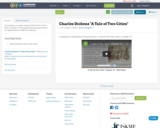
This resource is a video reading "A Tale of Two Cities" Book 2, Chapter 19. Throughout the presentation there are explanations for difficult vocabulary.
- Subject:
- English Language Arts
- Material Type:
- Interactive
- Date Added:
- 04/02/2018

This resource is a video reading "A Tale of Two Cities" Book 2, Chapter 19. Throughout the presentation there are explanations for difficult vocabulary.

The 11th grade learning experience consists of 7 mostly month-long units aligned to the Common Core State Standards, with available course material for teachers and students easily accessible online. Over the course of the year there is a steady progression in text complexity levels, sophistication of writing tasks, speaking and listening activities, and increased opportunities for independent and collaborative work. Rubrics and student models accompany many writing assignments.Throughout the 11th grade year, in addition to the Common Read texts that the whole class reads together, students each select an Independent Reading book and engage with peers in group Book Talks. Students move from learning the class rituals and routines and genre features of argument writing in Unit 11.1 to learning about narrative and informational genres in Unit 11.2: The American Short Story. Teacher resources provide additional materials to support each unit.

People often say that mankind should learn from history. Charles Dickens, whose books are considered classics, set his novel A Tale of Two Cities in the past. He wanted his readers to learn from the bloody French Revolution and from the widespread brutality in London. Both cities (Paris and London) offer the reader a glimpse into dark and dangerous times. As students read about Dickens's Victorian setting and learn his view of the French Revolution, they will think about what makes a just world. Students will have a chance to think about their own experiences, and, using techniques they have learned from Charles Dickens, they will do some writing that sends a message about your own world.
ACCOMPLISHMENTS
To complete the unit accomplishments, students will:
Read the Charles Dickens novel A Tale of Two Cities.
Read several short pieces, including a biography of Dickens and excerpts from other literature, to help them understand Dickens’s world and the world of the novel.
Explore new vocabulary to build their ability to write and speak using academic language.
Practice close reading and participate in several role plays and dramatic readings to help them experience the dramatic writing style of Charles Dickens.
Write a vignette and a short narrative piece, and practice using descriptive detail and precise language.
Write a reflection about the meaning of Dickens’s novel.
GUIDING QUESTIONS
These questions are a guide to stimulate thinking, discussion, and writing on the themes and ideas in the unit. For complete and thoughtful answers and for meaningful discussions, students must use evidence based on careful reading of the texts.
How does good storytelling affect the reader, and how can a good story promote change in the world?
What was the Victorian view of gender roles?
How can power be abused?
What is loyalty ? What are the limits of loyalty?
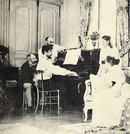
In this lesson, to help you enter into the world of A Tale of Two Cities, you will think about Dickens’s time period and the reasons that he wrote a novel that takes place before he was born.In this lesson, to help them enter into the world of A Tale of Two Cities, students will think about Dickens’s time period and the reasons that he wrote a novel that takes place before he was born.
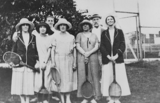
In this lesson, you will focus on writing description that is effective by using concrete, specific details that send a clear impression to your reader.In this lesson, students will focus on writing description that is effective by using concrete, specific details that send a clear impression to their reader.
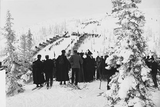
In this lesson, you will talk about the ways in which images send social and political messages to the reader.In this lesson, students will talk about the ways in which images send social and political messages to the reader.
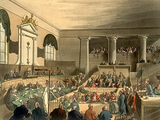
In this lesson, students will discuss the actions of the Revolutionaries in France and discuss whether or not they are being fair and just.
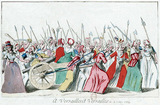
In this lesson, students will consider the ways that Dickens continues to build suspense for his readers and discuss one of the central questions of the novel: What is loyalty?
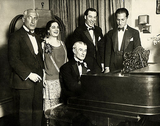
In this lesson, you will think about the way the politics of France have taken a turn toward Revolution, and you will reflect on the ways that private individuals confront public politics.In this lesson, students will think about the way the politics of France have taken a turn toward Revolution, and will reflect on the ways that private individuals confront public politics.

In this lesson, you will focus on filling your writing with vivid detail. You will complete a brainstorming exercise and work on your writing assignment.In this lesson, students will focus on filling their writing with vivid detail. They will complete a brainstorming exercise and work on their writing assignment.
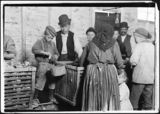
In this lesson, you will talk about the way that Dickens cries out for justice. You will begin by looking at mythical avengers.In this lesson, students will talk about the way that Dickens cries out for justice. They will begin by looking at mythical avengers.

In this lesson, you will consider Lucie’s situation as a single woman in the 18th Century. As you think about her options, you will explore further the characters of Carton, Darnay, and Stryver.In this lesson, students will consider Lucie’s situation as a single woman in the 18th Century. As students think about her options, they will explore further the characters of Carton, Darnay, and Stryver.
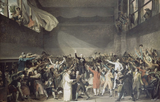
In this lesson, students will think about illustrating A Tale of Two Cities. They will consider what makes a good illustration and learn about Dickens’s most famous illustrator.
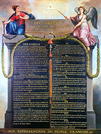
In this lesson, students will look further at the way that Dickens describes the Revolutionaries and try to uncover his opinion of the political situation in France. They will also consider whether or not Darnay can be considered heroic.
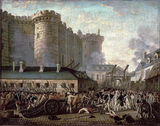
In this lesson, students will review the storming of the Bastille and the actions of the Revolutionaries in these chapters, paying particular attention to the ways in which Dickens represents the women who have become rebels.
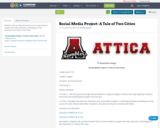
Students will use their favorite forms of social media to analyze the traits, decisions, and dialogue of the characters in A Tale of Two Cities.
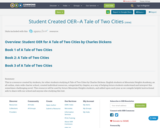
This is a resource created by students, for other students studying A Tale of Two Cities by Charles Dickens. English students at Mountain Heights Academy, an all-online, state-wide charter school, created individual resources, categorized by chapter, as a way of helping future students understand and interpret this sometimes challenging novel. This resource will be used by future Mountain Heights students, and added upon each year as we compile helpful instructional aids to share with our school and anyone else studying this text.
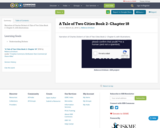
Narration of Charles Dicken's A Tale of Two Cities Book 2- Chapter 8, with illustrations.
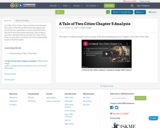
In A Tale of Two Cities, Charles Dickens foreshadows the events of the French Revolution throughout his novel. He uses symbolism to convey the dark future that the French Revolution will bring. This resource provides a detailed literary analysis on A Tale of Two Cities. In this video, we will go over the foreshadowing found in the 5th chapter.
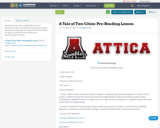
Students will use close reading skills to locate information within a nonfiction text
Students will gain background knowledge of A Tale of Two Cities
Students will apply vocabulary terms towards their understanding of the text